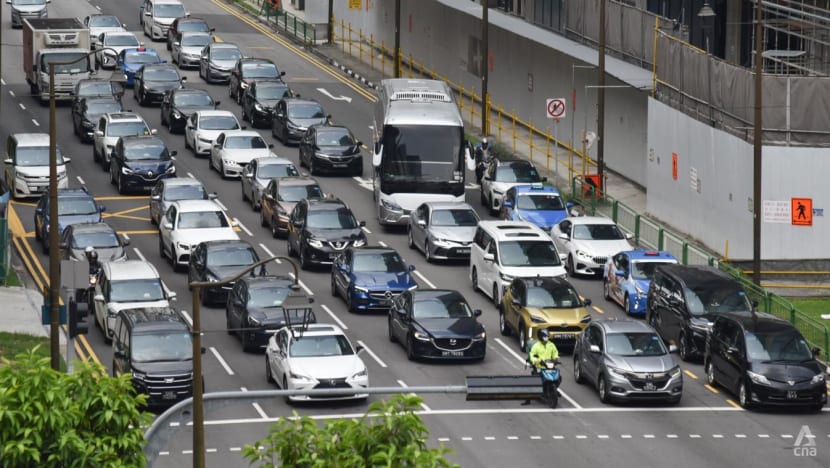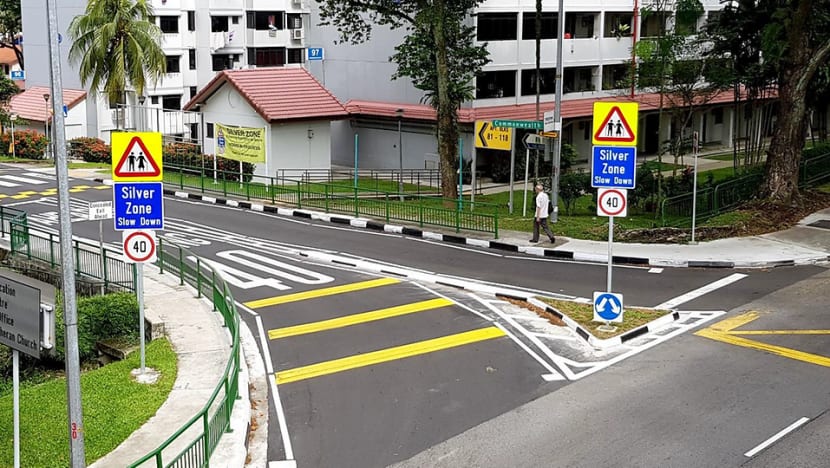Commentary: What would break bad driving habits in Singapore?
Road safety in Singapore has declined in the years following the COVID-19 pandemic. Firm action is needed to discourage irresponsible driving now, says transport engineering consultant Gopinath Menon.


This audio is generated by an AI tool.
SINGAPORE: To be safe and to feel safe on roads are important requirements of city life. A recent spate of road accidents, including a multi-vehicle collision at Tampines that left two dead, has stoked debate on the state of Singapore’s road safety and what could improve it.
The Ministry of Home Affairs said on May 7 that penalties for dangerous driving are adequate, having last raised them significantly in 2019.
On a broader level, Singapore’s road safety situation does not fare badly. With concerted effort from the authorities and with the backing of the community over the past five decades, road fatalities had been decreasing steadily until 2020.
Unfortunately, the pandemic might have put a halt to this encouraging trend. While the “circuit breaker” period brought about quieter roads and fewer traffic accidents, there were more speeding-related accidents and fatal drink-driving accidents in 2020 compared to 2019.
Studies in other countries suggest that COVID-19 has altered motorist behaviour, with drivers becoming more aggressive and willing to take risks. Impatience and frustration because of the pandemic’s restrictions may have led to more reckless driving.
In this post-COVID period, it appears that some drivers have not discarded such bad behaviour. The Singapore Police Force said on Apr 29 that over 800 speeding violations were detected in just three weeks since the speed enforcement function was activated in red-light cameras.
It is time to take firm action to discourage such bad driving behaviour before it becomes ingrained in some motorists.
LOWER SPEED LIMITS
Singapore could consider lowering its 50kmh speed limit in built-up areas such as the Central Business District and Housing Development Board (HDB) town centres to 40kmh, in line with other cities like Tokyo, London, Sydney and Toronto.
These are the locations where there are human activities that lead to potential traffic accidents. On long stretches of roads where pedestrians and cyclists are absent, like expressways, it makes sense to keep present speed limits to ease mobility.
Reducing speed limits in urban areas will reduce the number of fatalities. The higher the speed at which a collision occurs, the greater the damage or injury.
If a pedestrian is hit by a car travelling at 30kmh, the probability of fatality is 10 per cent. At 40kmh, it is 35 per cent, and at 50kmh, it is 55 per cent.
Singapore drivers tend to see speed limits as an assurance that they can always drive at that speed. But speed limits are what authorities consider as the maximum safe speed for the road.
Singapore has already reduced speed limits to 30kmh to 40kmh in locations where there are more pedestrians like school zones and silver zones.

ROAD MODIFICATIONS FOR SAFETY
Road modifications, such as road humps, speed regulating strips, coloured road pavements and warning signs help make built-up locations safer. They force drivers to slow down and also draw their attention to the presence of pedestrians and cyclists.
Recent accidents have highlighted how design can make roads safer. In January, a 4-year-old died after getting knocked down by a car at River Valley’s Institution Hill.
Residents said the area can be dangerous because the road is steep and has a bend, and have called for speed bumps to slow drivers down as they travel downhill.
In April, a student was hit at a zebra crossing outside Bukit View Secondary School by a car that did not give way to her. While warning signs flag school zones and pedestrian crossings, some drivers fail to spot them.
Flashing signs with messages such as “Pedestrians ahead’’ or “Slow” are more conspicuous to drivers. For a start, all zebra crossings near schools could have flashing signs that operate around school starting and dismissal times, in addition to static warning signs.
MAKE REFRESHER COURSES MANDATORY FOR ERRANT DRIVERS
Errant drivers can be made to attend refresher courses earlier, to nip bad driving habits in the bud.
Under Singapore’s Driver Improvement Points System, demerit points are given to drivers for traffic violations, in addition to potential fines and criminal penalties. For instance, exceeding the speed limit by 20kmh results in four demerit points, while running a red light results in 12 demerit points.
If a driver accumulates 24 points within a period of two years, his licence is suspended for 12 weeks.
At present, drivers can pay to attend a safe driving course to remove four demerit points from their record, and those who are suspended can attend a retraining course to shorten the length of their suspension. However, these courses are not mandatory, and are corrective rather than preventive in nature.
To put reckless drivers on notice earlier, a driver who accumulates 16 points or more should be required to attend a refresher course. He or she can be given a reprieve of four demerit points upon participation, and an addition of four demerit points if not.
The inconvenience and cost of attending a compulsory course, coupled with the possibility of blemishing one’s driving record, can deter dangerous driving and correct bad habits.
Requiring errant drivers to do community service can have a similar effect. Corrective work orders are issued to litterbugs to clean public areas for a few hours. Likewise, drivers who are caught not giving way to pedestrians can be made to do traffic warden duty for a few hours, for instance at zebra crossings near schools.
As a community, we can be proud that we have worked together to make Singapore’s roads safer over the years. We should spare no effort in ensuring that the inconsiderate and dangerous road behaviour of some individuals does not negate our efforts.
Gopinath Menon is a transport engineering consultant and former Vice-Chairman of the Singapore Road Safety Council.

















